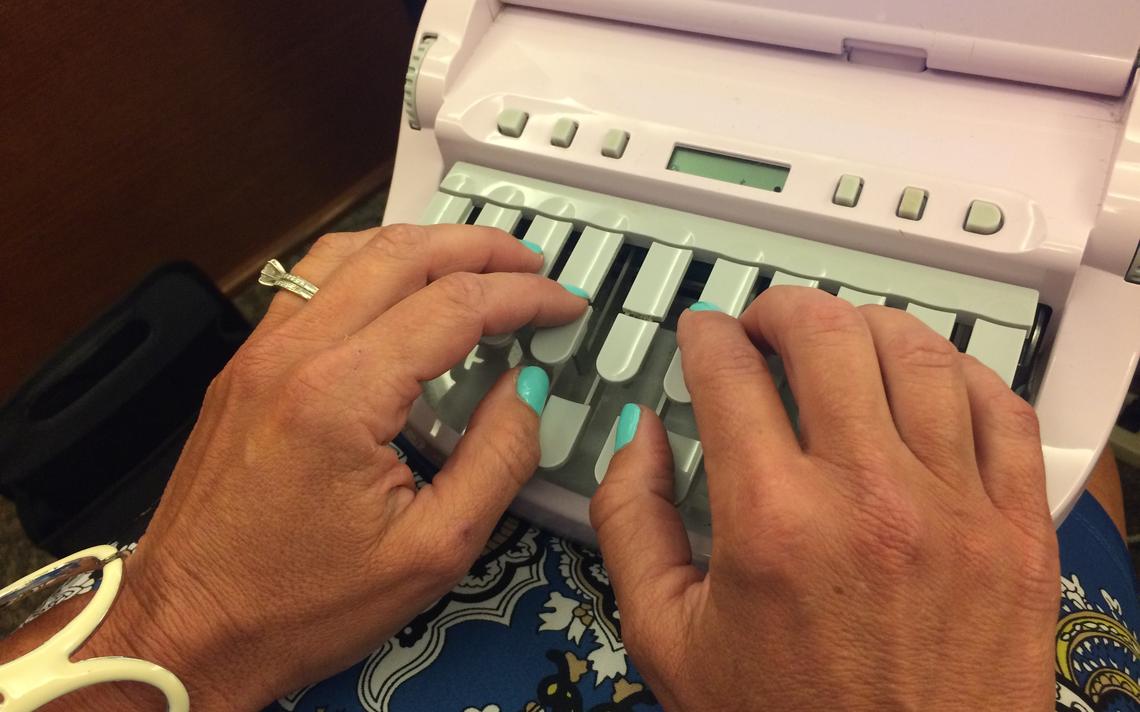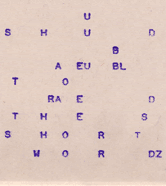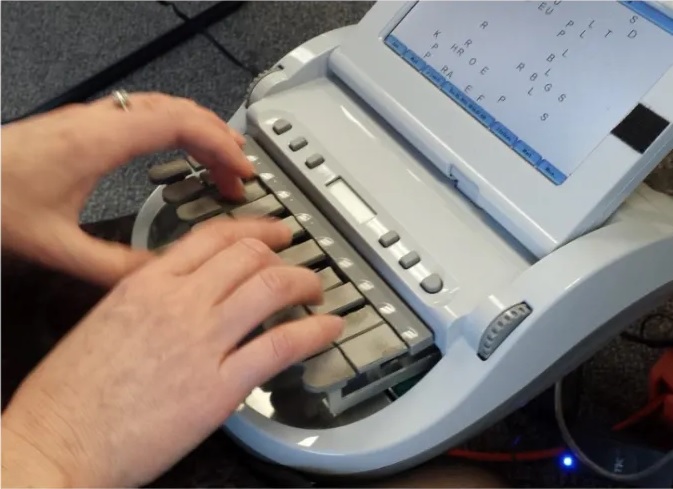
How could this have happened? (As of 12/1/2020, YouTube subtitles have not been corrected.)
Stenotype
For more than a hundred years, American stenographers have been using special devices with a minimum 22-key keyboard - two keys for each finger to minimize hand movement:

A hundred years ago, the stenotype was a variant of the typewriter, and each key left an impression on paper. There was no carriage: after each "chord" of one or more simultaneously pressed keys, the paper was scrolled down one line. The imprint of each letter was always at the same place in the line. The P, R, S, T keys are present in duplicate each - under the left and under the right hand.

Each "chord" and each line in the printout corresponds to one syllable. There are no spaces between words, and the words themselves are transmitted phonetically: on the printout shown above, the phrase “You should be able to read these short words” is transcribed . Since there are fewer keys than letters in the English alphabet, and even more so than sounds in English speech, an ingenious "coding" system is used, for example [n] is written as PB, [l] as HR, diphthong [eɪ] as AEU , etc. With this coding, for example, the word gleam recorded as TKPWHRAOEPL - «chord" of the eleven rollovers!
Example of an excerpt from a court hearing transcript


After the meeting, the stenographer had to sit and retype his transcript on an ordinary typewriter, because it is absolutely impossible for an unprepared person to read it. In the above example, the phrase “absolutely one hundred percent” is written as SHRAOUT HRAOE WOPB HUPBD PERS, which means [sljuːtliː wɒn hʌnd pɛrs] - missing syllables should be reconstructed according to the context, and vowels do not quite match the dictionary transcription. There are different systems of notation and abbreviation, so that even stenographers themselves find it difficult to read each other's notes. Here is a short excerpt from a shorthand textbook that was edited by the owner for a different system:

It is believed that the average rate of English speech is 130 words per minute, and a stenotyped stenographer can type up to 300 words per minute, which allows you to record the conversation even when the interlocutors interrupt each other. There is a similar Velotype system , focused on letter-by-letter instead of phonetic; it allows you to type up to 200 words per minute. The difference is caused by the fact that English words almost always have more letters than sounds - sometimes twice, as in the words choose [tʃuːz] or earth[ɜːθ]. Velotype was created in 1939 when tab stops and automatic data processing flourished; The motivation for writing letter by letter was a simpler transcript that could even be assigned to an electromechanical machine. Along with other office equipment, the stenographic machines themselves were electrified: instead of mechanically connected keys and letters printed on paper, electronics, convenient displays, digital storage and processing of transcripts have been used since the end of the last century.

At the beginning of this century, the capabilities of computerized natural language processing reached the level of automatically deciphering stenotype phonetic transcripts and turning "SHRAOUT HRAOE" into "absolutely". Then support for persons with disabilities reached the level of TV channels accompanying live broadcasts with real-time subtitles for those who find it easier to read than listen. This means that a stenographer with a stenotype is watching the broadcast, he records the speech of the announcer and other participants in the broadcast, his computer transcribes the transcript, if necessary, automatically translates it into the language of the target audience, and transmits the resulting text on the air and on YouTube.
Apparently, on 11/12/2020, something went wrong with CNN in this complex system, and the decryptor's output was mixed with pieces of an undeciphered transcript. Even if they discovered a failure during the transfer, they decided not to touch anything, so that something more important would not break off. The case on Fox News in 2013 made a lot more noise : that time, the decryptor did not cope with the name of Dzhokhar Tsarnaev , who caused the explosion at the Boston Marathon, and substituted the name of actress Zooey Deschanel in the subtitles for him .